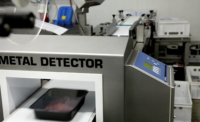Pounding Pathogens
PURAC America Inc offers a natural-ingredient solution to meat and poultry safety concerns.
Antimicrobial agents can be powerful weapons in the war on pathogens. Added to meat and poultry products during processing, the ingredients generally are easy to use, inexpensive in comparison to other interventions, and effective as a key hurdle in a multi-hurdle approach to pathogen reduction/elimination.
One of the nation’s leading suppliers of such ingredients is PURAC America Inc, Lincolnshire, IL. The company not only supplies natural lactic acid and lactates to the meat and poultry sectors, but also supplies these ingredients, as well as gluconates, to the health care, cosmetic, detergent, and confectionery industries.
For packers and processors, PURAC recommends formulating products with PURASAL®, an ingredient made from natural lactic acid that is already present in meat. PURASAL Opti.Form® is a specially designed formulation consisting of natural sodium/potassium lactate and sodium diacetate. It has proved to be highly effective on the meat industry’s three major pathogens of concern: Listeria monocytogenes, Salmonella, and E. coli O147:H7. According to PURAC, the antimicrobial system also extends shelf life, protects flavor, and increases color stability.
RTE protection
PURAC’s most recent work has focused on applying the technology to ready-to-eat (RTE) meat and poultry products.
In 2003, the U.S. Department of Agriculture’s (USDA) Food Safety and Inspection Service (FSIS) published a Final Rule that encourages the use of antimicrobial agents to control Listeria in meat and poultry products. This Final Rule allows the use of PURASAL to reduce the risk classification of RTE products, explains Jim Lees, PURAC’s market unit director. Companies using the antimicrobials and validating the control of Listeria are able to quality for “Alternative 2” under the FSIS Rule, he adds.
Meat processors can determine appropriate use levels of PURASAL Opti.Form easily and conveniently using PURAC’s scientifically validated model, notes Lees. The Opti.Form Listeria Growth Suppression Model uses a brand new scientific model developed by Oscar Mayer Foods, Madison, WI, to quickly and easily validate how the PURASAL Opti.Form products — blends of sodium or potassium lactate and sodium diacetate — suppress Listeria growth in cured meat and poultry products in accordance with the new USDA Listeria Rule.
Oscar Mayer, a division of Northfield, IL-based Kraft Foods, was a critical partner in the development of the Opti.Form technology and model. In the mid-1990s, Oscar Mayer’s team translated university research into commercial applications that PURAC then extended and marketed. Oscar Mayer since has applied the lactate/diacetate technology to its RTE hot dogs, sliced luncheon meats, and cotto salami products.
Fresh applications
PURAC’s ingredient technologies also bring benefits to fresh meat offerings, particularly in the booming case-ready category.
“In general, we see the case-ready meat market growing,” says Lees. “Many retailers— for example, Walmart— are moving toward enhanced case-ready meat,” he adds.
Processors often pump beef products with an 8-to-10 percent solution of salt, water, and phosphates, says Lees. The inclusion of lactate at 2 to 3 percent as the final ingredient incorporated into the brine helps maintain the red color in these enhanced meats, greatly extending the shelf life in terms of color stability.
On the enhanced fresh pork side, processors generally pump the products with a 10-to-15 percent solution of salt, water, and phosphates. Again, the addition of lactate at 2 to 3 percent adds value to these products, says Lees, boosting both tenderness and juiciness. These benefits are particularly important to pork, he adds, which consumers often overcook. NP
Purac America Inc, phone (847) 634-6330, fax (847) 634-1992, e-mail pam@purac.com, or visit www.purac.com

Report Abusive Comment